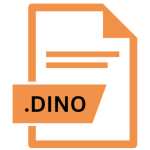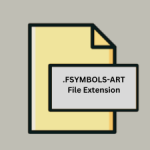.FPG File Extension

Fenix Graphics Collection File
| Developer | N/A |
| Popularity | |
| Category | Raster Image Files |
| Format | .FPG |
| Cross Platform | Update Soon |
What is an FPG file?
The .FPG file extension is primarily associated with Fenix Graphics Collection, a proprietary file format utilized for storing graphical assets.
These files encapsulate a range of graphical elements, including images, textures, icons, and other visual resources.
The Fenix Graphics Collection serves as a repository for multimedia content, facilitating efficient management and organization of graphical assets within software applications.
More Information.
The inception of the .FPG file format coincided with the rise of Fenix as a prominent game development tool.
As developers sought streamlined methods for incorporating graphical content into their projects, Fenix Graphics Collection emerged as a convenient solution.
By consolidating disparate graphical assets into a single, cohesive file format, .FPG files simplified the process of integrating visuals within Fenix-powered games.
Origin Of This File.
The genesis of the .FPG file extension can be traced back to the development of Fenix, a versatile game development engine renowned for its simplicity and accessibility.
Originally created by developer Fenix2D, Fenix gained prominence in the early 2000s as a preferred choice for amateur and indie game developers seeking an intuitive platform for crafting 2D games.
File Structure Technical Specification.
.FPG file format comprises a structured repository of graphical data. The exact specifications of .FPG files may vary depending on the version of Fenix or the associated development environment.
Common elements typically found within .FPG files include:
- Header Information: Contains metadata such as file version, dimensions, and color depth.
- Image Data: Encapsulates the actual graphical content, organized into individual frames or sprites.
- Palette Information: Stores color palette data used for rendering images within the collection.
- Index Table: Facilitates efficient retrieval of graphical assets within the .FPG file.
These components work in tandem to provide a comprehensive framework for storing and accessing graphical resources within the Fenix ecosystem.
How to Convert the File?
Converting .FPG files to alternative formats may be necessary to facilitate compatibility with other software applications or development environments. Several methods exist for converting .FPG files, including:
- Custom Tools: Third-party utilities or custom scripts can be developed to extract graphical content from .FPG files and convert it to standard image formats such as PNG or JPEG.
- Manual Extraction: Developers can manually extract individual graphical assets from .FPG files using specialized software tools capable of parsing the file structure.
- Export Functions: Some versions of Fenix or associated development environments may offer built-in export functions for converting .FPG files to alternative formats.
When converting .FPG files, it is essential to preserve the integrity of graphical assets and ensure compatibility with the target platform or application.
Advantages And Disadvantages.
Advantages:
- Streamlined Asset Management: .FPG files simplify the organization and deployment of graphical assets within Fenix-powered projects, enhancing overall development efficiency.
- Optimized Performance: By consolidating multiple graphical elements into a single file, .FPG facilitates faster loading times and reduced memory overhead during runtime.
- Platform Compatibility: Fenix Graphics Collection files are designed for seamless integration within Fenix-based applications, ensuring cross-platform compatibility across supported environments.
Disadvantages:
- Proprietary Nature: As a proprietary file format associated with Fenix, .FPG files may pose challenges for interoperability with other game engines or development platforms.
- Limited Flexibility: While effective for managing 2D graphical assets, .FPG files may not be suitable for complex multimedia content or advanced rendering techniques.
- Dependency on Fenix: The use of .FPG files inherently ties developers to the Fenix ecosystem, limiting options for migration or scalability beyond the platform.
How to Open FPG?
Open In Windows
- Fenix IDE: Fenix IDE is the primary tool for working with .FPG files in the Windows operating system. It provides a comprehensive development environment for creating, editing, and viewing Fenix Graphics Collection files.
Open In Linux
- Emulation or Virtualization: Since Fenix IDE is primarily designed for Windows, Linux users can utilize emulation or virtualization software such as Wine or VirtualBox to run Fenix IDE within a Linux environment. Once Fenix IDE is installed, users can open .FPG files as they would on a Windows system.
Open In MAC
- Emulation or Virtualization: Similar to Linux, macOS users can use emulation or virtualization software like Wine or VirtualBox to run Fenix IDE within a macOS environment. After installing Fenix IDE, users can open .FPG files as they would on a Windows system.
Open In Android
- Third-Party Apps: While Fenix IDE may not be directly available for Android, developers can explore third-party apps or tools designed for Fenix game development. These apps may offer limited functionality compared to the desktop version but can still provide basic capabilities for viewing and working with .FPG files on Android devices.
Open In IOS
- Third-Party Apps: Similarly to Android, there may not be native support for opening .FPG files on iOS devices. However, developers can explore third-party apps or tools that support Fenix game development on iOS. These apps may offer limited functionality but can still allow users to view and interact with .FPG files on iOS devices.













